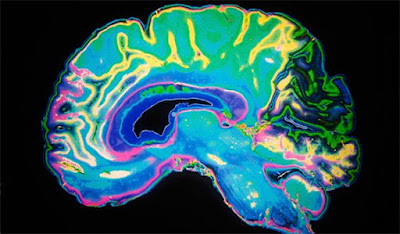Week 7: Neuroscience + Art
 |
| http://www.educationnews.org/wp-content/uploads/2015/08/brian_scan.jpg |
Neuroscience joined with art has allowed for scientists to accurately map and model the brain. Mapping the brain has helped scientists see the many functions of each part of the brain, and to see if the brain is functioning correctly. A fMRI, an example of brain mapping, allows for images of the brain to be seen by doctors to see if the brain is functioning correctly. Suzanne Anker used fMRI's as a form of art by superimposing butterflies as an overlay on the fMRI which gives somewhat of an optical illusion for the viewer. Anker's technique influences scientists to continue the work to gain more information about the brain.
 |
| http://www.nature.com/nrn/journal/v10/n11/fig_tab/nrn2736_F2.html |
In the article "Neuroculture", neuroculture is defined as "The interaction between art and science offers an opportunity to make the scientific community and the public aware of the social and ethical implications of the scientific advances in neuroscience". The article further goes to say that the more we create art based off the brain, the more knowledge we will know about ourselves and the living things around us. Scientist like Ramon and Cajal have inspired to make artwork out of humans because of the beauty it created. Art has become the focal point when conducting experiments in labs.
"Nature." Nature.com. Nature Publishing Group, n.d. Web. 21 May 2017.
"Stanford Study: Brain Scans May Predict Students’ Math Capabilities." Education News. N.p., 8 Feb. 2015. Web. 21 May 2017.
Vesna, Victoria. "Neuroscience-pt1." YouTube. N.p., n.d. Web. 21 May 2017.
Vesna, Victoria. "Neuroscience-pt2." YouTube. N.p., n.d. Web. 21 May 2017.
Vesna, Victoria. "Neuroscience-pt3." YouTube. N.p., n.d. Web. 21 May 2017.
Franzetto, Giovanni, and Suzanne Anker. "Neuroculture." Nature.com. Nature Publishing Group, Nov. 2009. Web. 21 May 2017.

Comments
Post a Comment